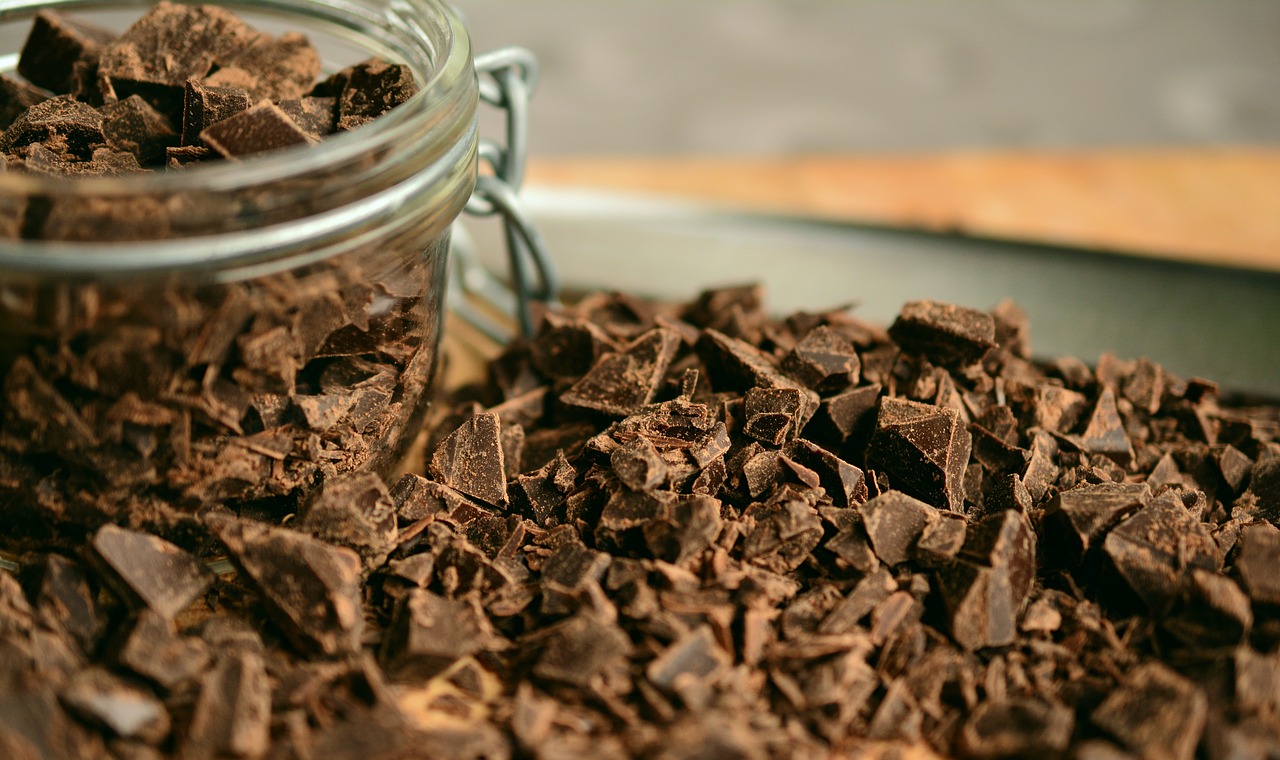Food of the Gods?
Here we are only examining three main health concerns; for full information on how chocolate can affect your pet, consult your veterinarian. Whether these things occur and to what extent is determined by the amount the pet ate, the size of the pet, species of pet, prior health, and at what stage did you find out the pet had eaten the chocolate.
Theobromine Poisoning
Theobromine is a bitter alkaloid found in chocolate and other foods, such as the leaves of the tea plant and the cola nut. The name comes from the chocolate plant itself and is Latin for ‘food of the gods’. By itself, cacao is bitter enough to put off most animals, but chocolate sold in North America is very commonly combined with sweeteners and other additives that reduce the bitterness and make the product extremely palatable.
Like many other toxic substances, theobromine overdose is a matter of degree. Humans may suffer from it as well as pets. Humans, however, metabolize theobromine faster than a dog or cat. We rarely suffer from theobromine poisoning, although it can happen if one consumes enough. It only takes one ounce per pound of dog for an overdose to occur.
Symptoms include lethargy, vomiting, diarrhea, uneven heartbeat, seizures, and increased urination.
Caffeine Poisoning
Caffeine poisoning is not as much of a concern when a pet eats chocolate, but it could be a factor in its illness. Chocolate-covered espresso beans, for example, could deliver a double whammy in both theobromine and caffeine poisoning. Symptoms are like theobromine poisoning: vomiting, seizures, uneven heartbeat. Caffeine-poisoned pets may also be restless and hyperactive.
Pancreatitis
Pancreatitis is an inflammation of the pancreas and can be brought on by high fat intake. While mild attacks may only cause discomfort, serious attacks can cause damage to other organs and even the brain. Acute pancreatitis can be triggered if a pet consumes a large amount of fat in a short period of time. This is life-threatening, extremely painful, and expensive to alleviate. Pancreatitis also usually appears several days after the fat was ingested, making it harder for owners to ascertain what is wrong. Symptoms include fever, vomiting, diarrhea, loss of appetite, lethargy, and abdominal pain.

